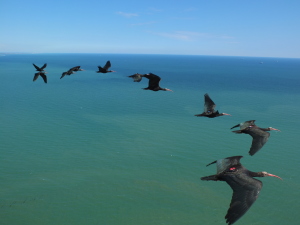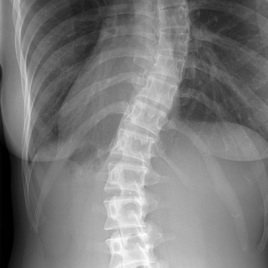
The researchers believe that flying in a “v” formation evolved as a cooperative behaviour to minimize the risks of long migratory journeys. (Photo credit: Image courtesy of Johannes Fritz)
Who will fly in front? When migrating, northern bald ibises fly in a ‘v’ formation and take turns with the toughest position at the front of the ‘v’, so they all have a chance to relax and enjoy riding the slipstream, a new study shows. The evidence gathered is the first to show cooperative reciprocal behaviour in birds.
Researchers studied 14 juvenile birds that were fostered by humans and were taught a new migration route by following a powered parachute from Austria to Italy.
The birds cooperated by taking turns and matching exactly the times they spent in the advantageous trailing position and in the disadvantageous front position, even though they were not born and raised together.
Videos and additional photos available upon request.
Original research paper published in PNAS on February 2, 2015.
Names and affiliations of selected authors


